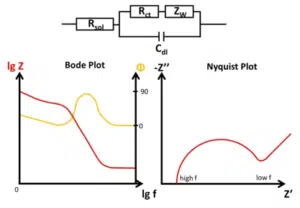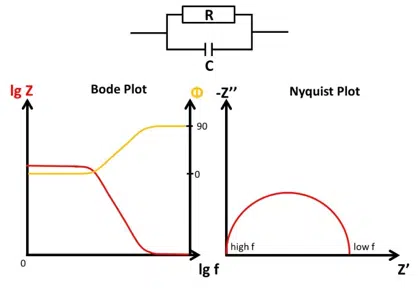Bode Plot
The Bode Plot is one of two very popular plots for Electrochemical Impedance Spectroscopy (EIS) data. The other one is the Nyquist Plot.
In the Bode Plot the logarithm of the total impedance lg Z is plotted versus the logarithm of the frequency lg f. In the same graph also the phase shift φ is plotted versus the lg f.
The advantage is that the frequency dependence is clearly visible in the Bode plot and no information is lost. The disadvantage is that the Bode plot is not very sensitive to changes in the measured system as long as the fundamental behavior of the system isn’t changing.

Warburg element in a schematic Bode and Nyquist plot
Articles

Bode and Nyquist Plot
In this chapter the two main ways of visualizing Electrochemical Impedance Spectra (EIS), the Nyquist and Bode plot, are presented and it is explained how different EIS of easy electronic circuits will be plotted in the Bode and Nyquist plot. This demonstrates the advantages and disadvantages of the two plots as well as serving as a foundation to understand the analysis of EIS by utilizing equivalent circuits.
